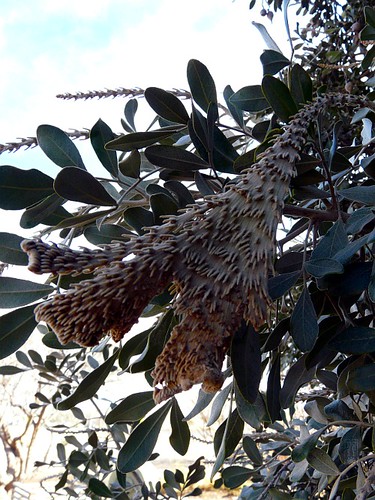
Fasciation in a Sophora secundiflora, Texas Mountain Laurel
Time Machine Master Gardener's Garden, Odessa, Texas. Jan 19 2011
This odd fan form is not normal. It's is actually a kind of mutation at the cellular level, caused by a pest, genetics, damage, or other unknown factors. Some plants are prone to fasciation. I've seen it on several different specimens of the Sophora sedundiflora, one of my favorite Texas native trees. I think the form is beautiful. Apparently so do others, especially those gardeners that love, say, the cockscomb flower. Once you start looking for fascinating examples, you too will find fasciations.



2 comments:
That's how evolution works.
Wonder if Siamese twins are a form of fasciation. I have not seen it on a shrub before, often on the wild black eyed susans.
Post a Comment